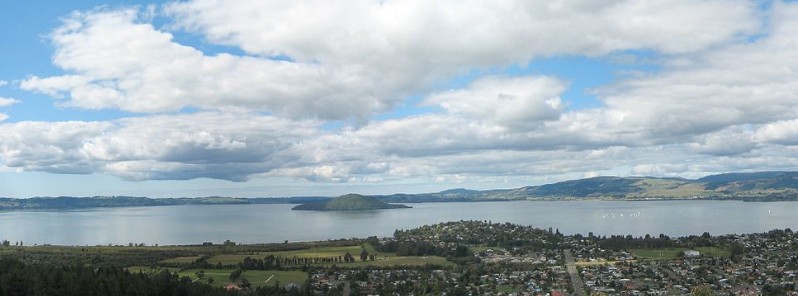Fourth eruption at Lake Rotorua, New Zealand

Another hydrothermal eruption, the fourth since November 2016, took place at New Zealand's Lake Rotorua between 04:00 and 04:30 local time on February 12, 2017. The eruption lasted between 5 and 10 seconds.
Residents who witnessed the eruption said this one was a lot wider than previous ones. "It was like a wall of black water," resident Lani Kereopa told NZHerald.
She said the previous eruptions had started with pulsing, like rumbling, under the ground first but she did not hear that this time.
This time all she heard was spray and, since it was the fourth eruption, any noise made her a bit anxious.
The eruptions were happening directly in front of the channel which should run into Ruapeka lagoon, Ms Kereopa said. The Ruapeka lagoon had been closed off from the lake as a sand bar was developing in front of it. She could not help but feel it was connected as there had been no eruptions before it closed itself off.
It is the fourth hydrothermal eruption at Lake Rotorua since November 28, 2016. The last one occurred before Christmas.
Geological summary
The 22-km-wide Rotorua caldera is the NW-most caldera of the Taupo volcanic zone. It is the only single-event caldera in the Taupo Volcanic Zone and was formed about 220,000 years ago following eruption of the >340 cu km rhyolitic Mamaku Ignimbrite. Although caldera collapse occurred in a single event, the process was complex and involved multiple collapse blocks.
The major city of Rotorua lies at the south end of the lake that fills much of the caldera. Post-collapse eruptive activity, which ceased during the Pleistocene, was restricted to lava dome extrusion without major explosive activity. The youngest activity consisted of the eruption of three lava domes less than 25,000 years ago. The major thermal areas of Takeke, Tikitere, Lake Rotokawa, and Rotorua-Whakarewarewa are located within the caldera or outside its rim, and the city of Rotorua lies within and adjacent to active geothermal fields. (GVP)
Featured image: Panoramic view of Lake Rotorua from Mount Ngongotaha. Credit: Avenue

Commenting rules and guidelines
We value the thoughts and opinions of our readers and welcome healthy discussions on our website. In order to maintain a respectful and positive community, we ask that all commenters follow these rules.